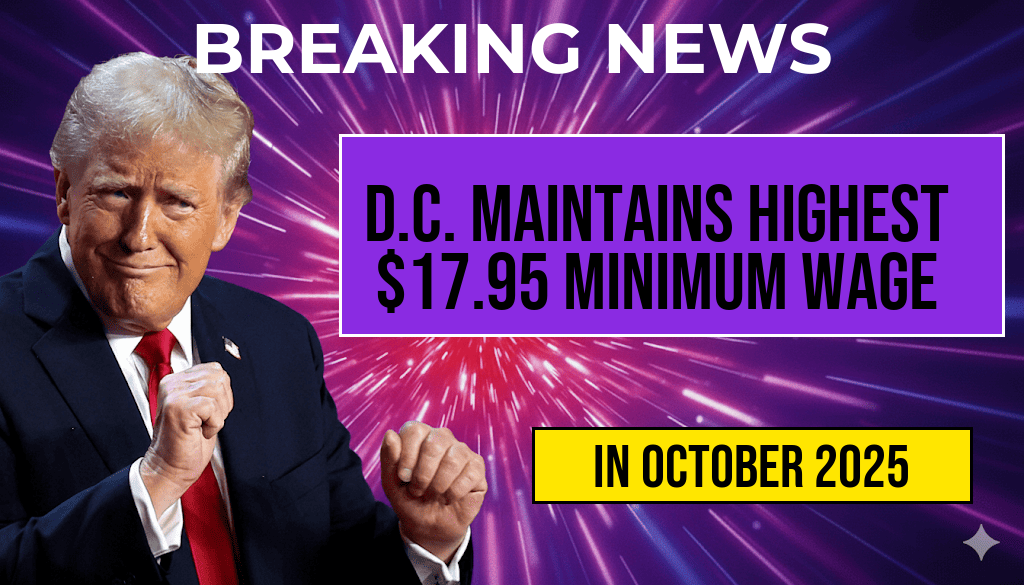Starting October 2025, eligible U.S. citizens will receive a $2,000 direct deposit from the Internal Revenue Service (IRS) as part of a new initiative aimed at providing targeted financial relief. This one-time payment is scheduled to be distributed over the coming weeks, with eligibility criteria based on recent income and tax filing status. The IRS has outlined specific guidelines to ensure the process remains transparent and accessible, emphasizing that affected individuals should verify their eligibility through official channels. Payments will be automatically deposited into the bank accounts on record with the IRS, eliminating the need for additional applications. As the program rolls out, taxpayers are encouraged to review the IRS guidance and confirm their banking information to avoid delays. The initiative underscores the federal government’s ongoing efforts to support American households amid economic fluctuations.
Understanding the $2,000 Direct Deposit Program
Eligibility Criteria
- Income Thresholds: U.S. citizens with adjusted gross incomes (AGI) below $75,000 for individuals and $150,000 for married couples filing jointly qualify for the full $2,000 payment.
- Tax Filing Status: Only those who filed federal tax returns for the 2024 tax year are eligible.
- Residency Requirements: Applicants must be current residents of the United States and have a valid Social Security Number.
- No Additional Application Needed: The IRS will automatically determine eligibility based on existing tax data, streamlining the process.
Payment Schedule and Method
| Distribution Phase | Estimated Date Range | Payment Method |
|---|---|---|
| Initial Deposits | October 15 – October 31, 2025 | Direct deposit to bank accounts on file |
| Supplementary Payments | November 1 – November 15, 2025 | Automatic deposits for eligible late filers |
IRS Guidance and Verification Process
The IRS has issued detailed instructions to ensure a smooth distribution process. Eligible taxpayers are encouraged to verify their banking information through the IRS online portal or by contacting the IRS directly. The agency emphasizes that no action is necessary for most recipients, as eligibility will be determined automatically based on submitted tax returns. However, individuals who have changed bank accounts or need to update their information should do so promptly to prevent delays in receiving their payments. Additional guidance is available on the IRS website, which provides FAQs and step-by-step instructions for account verification and updates (IRS official site).
Implications for Recipients and Broader Economic Impact
Financial Relief and Consumer Spending
The $2,000 direct deposit aims to bolster household finances, especially for low- and middle-income families facing rising costs of living. Economists suggest that such targeted payments can stimulate consumer spending, supporting small businesses and local economies. The initiative also seeks to reduce financial stress and improve overall economic stability during uncertain times.
Tax Considerations and Future Reporting
Recipients should be aware that this payment is considered a tax-exempt benefit. However, it is recommended to keep documentation of the transaction for future reference. The IRS notes that the payments will not be reflected as taxable income on federal returns for 2025. Taxpayers should consult with a tax professional if they have questions about how the payment might influence their financial filings or eligibility for other programs.
Potential for Additional Support Measures
The federal government continues to evaluate economic support initiatives, with some policymakers advocating for broader or recurring payments. The success of the October 2025 distribution could influence future policy decisions aimed at providing ongoing financial assistance to Americans facing economic challenges.
Resources and Next Steps for Eligible Citizens
- Check Eligibility: Visit the IRS website for official eligibility criteria and updates.
- Verify Banking Information: Ensure your bank details are current in the IRS system to facilitate seamless deposits.
- Stay Informed: Follow official IRS communications and news outlets for the latest information on distribution schedules and potential changes.
As the October 2025 distribution approaches, eligible Americans should prepare by reviewing their tax filings and banking information. The IRS’s streamlined process aims to deliver relief efficiently, reflecting a broader effort to support households amid ongoing economic shifts. For ongoing updates and detailed guidance, taxpayers are encouraged to consult the Forbes and official IRS resources.
Frequently Asked Questions
Who is eligible to receive the $2,000 direct deposit in October 2025?
U.S. citizens who meet the specified eligibility criteria outlined by the IRS will qualify for the $2,000 direct deposit payment. This typically includes certain income thresholds, filing status, and other qualifying factors as described in the IRS guidance.
When will the $2,000 direct deposit be issued in October 2025?
The payment schedule for the $2,000 direct deposit is outlined by the IRS and is expected to begin in early October 2025, with subsequent deposits distributed according to eligibility and processing timelines.
How can I verify if I am eligible for the $2,000 payment?
You can verify your eligibility by reviewing the IRS guidelines and using the official tools provided on their website. Ensure your filing status, income level, and other qualifying factors align with the criteria specified.
What should I do if I haven’t received my $2,000 payment by the expected date?
If you haven’t received your payment by the scheduled date, check the IRS status tools online, review your direct deposit information, and ensure there are no issues with your tax filings. Contact IRS support if necessary for further assistance.
Are there any tax implications associated with the $2,000 direct deposit?
According to the IRS guidance, the payment is generally considered a tax credit or benefit and may not be taxable income. However, it is advisable to consult a tax professional or review IRS resources for specific implications related to your situation.






